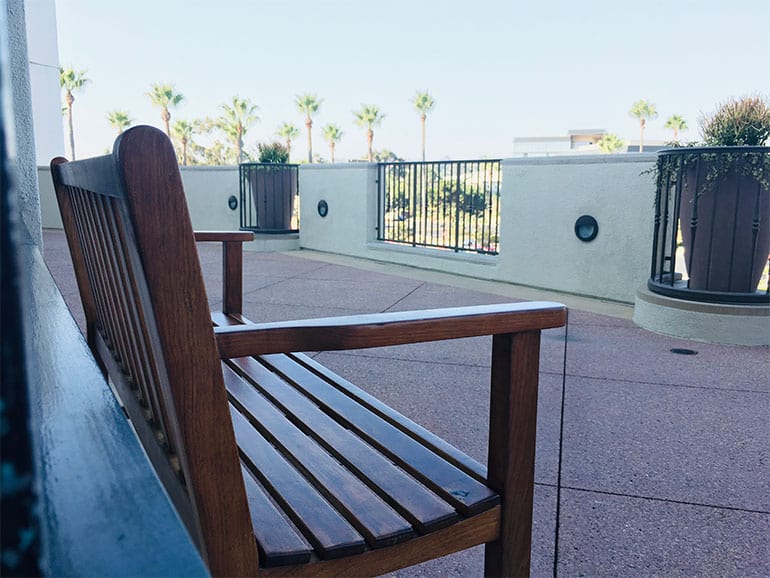
Our current cultural moment is complex and nuanced. Southern California is well-known for being fast paced, with fast cars and fast people, a place filled with side hustles and overworked professionals. Even on our days off, our schedules are jam packed with social engagements and obligatory errands. We are chronically tired, forgetting to prioritize sleep, and our attention is chronically frayed, pulled back and forth between threads of mental chatter and the noise of our media-heavy world. We find ourselves constantly moving, both internally and externally; even while sitting still, our fingers reach for entertainment, scrolling up and down our screens, anxious for more images, more words, more noise. We have forgotten how to stop, how to slow down, how to simply be.
The last six months have been an unprecedented time of societal shutdown. Our workplaces closed, our schools closed, our social haunts were shuttered, and we were forbidden to gather with our friends and extended families. And yet, even in all of this ‘stillness’, we have still found ways to keep hustling, whether that be through media consumption, a resurgence of hobbies, or online social meetups. Even when forced to stop, we found ways to keep moving and escape the stillness.
Stillness is a practice and conscious choice. It is not hermithood or monasticism, but a simple injection of mindfulness and focused consciousness into busy lives. Few of us have the luxury of actually ceasing from busyness and I question whether we even should. So much of what makes us busy is stubbornly meaningful: hard work, commitment to community, loyalty to family, and an enjoyment of life. None of this should be ignored or criticized. However, even in our cluster of meaningful activity, we ought to cultivate a space for stillness, a place for rest without constant stimulation. Stillness forces us to simply be. In a culture built on hustling, it is easy to equate our productivity with our worth and view the realization of ambition as the only point of our existence. Neither of these are true. We were created first and foremost as human beings, not human doings.
Stillness provides us with space to observe and appreciate both our own existence and the existence of this magnificent natural world. Stillness urges us to be both inwardly and outwardly focused, compelling both introspection and external observation.
Stillness brings us face to face with ourselves and is the first step of meaningful introspection. Without anything to distract us, we become aware of what we are truly thinking. Subconscious, unprocessed feelings rise to the surface and we are forced to confront the reality of our emotions. The value of this cannot be underestimated. Regardless of whether or not we acknowledge our feelings, they will affect us and our behavior. Honest introspection allows us to get to know ourselves and make conscious decisions on what we will do with what we feel; we get to regulate our own emotions instead of having them regulate us.
Stillness also opens our eyes to who and what is around us. This awareness of our environment and of our relationships cultivates empathy and gratitude. We start to notice the little things: the way the sunlight peeks in between the trees or the sound of birds in the morning, the smile on a friend’s face or the warmth of their embrace. Stillness grounds us in our environment and enables us to consciously pursue gratitude. Additionally, we are better able to notice the demeanors and reactions of other people, enabling us to recognize when a person is having a difficult time, giving us the opportunity to express empathy and communicate love to them.
This practice of stillness is, in a lot of ways, a practice of mindfulness. Mindfulness is focused attention on some aspect of our present moment, whether that be our feelings, our physical bodies, our current activity, or our environment. The practice of stillness, of slowing down and simply being present, is one way of practicing mindfulness. The benefits of such a practice has been well-researched in scientific circles, and is proven to lower blood pressure, reduce the presence of stress hormones, and foster an overall state of wellbeing.
None of us want to wake up one day and realize that we missed our whole lives. Time’s constant momentum forward is a reality that we cannot avoid or ignore, but we do not have to be dragged along without our consent. The practice of stillness is an opportunity for us to hit the pause button on time, to lengthen the moment and take stock of it. Life is short, but it doesn’t have to go by thoughtlessly. Start practicing stillness, even in small ways, and you might be surprised at what you find, both inside and outside of yourself, and how much better you feel.
- Stop Anxiety from Taking Over Your Life - March 8, 2021
- 3 Ways to Bust Stress in 5 Minutes or Less - February 23, 2021
- Want Treatment That Works? Try our Cash-Based Physical Therapy! - February 3, 2021





